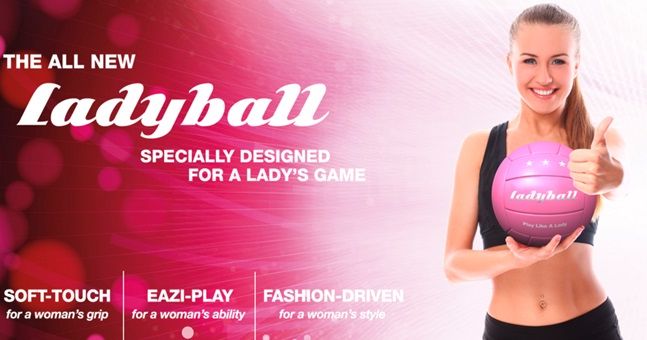Last week saw one of the most bizarre advertising campaigns in recent memory with the launch and subsequent reveal of the “Ladyball”. It branded itself as a special ball perfectly fit for the needs of women with a “soft touch” and “lite weight” and most importantly a stylish pink exterior. The public reaction was unanimous. This was either a terribly insulting idea or a joke…or both.
About a week after the launch of the Ladyball came the inevitable reveal. A joke it was. A joke played by the LGFA, the governing body of ladies gaelic football, to give the sport greater exposure. The main objective of the PR stunt was to challenge any negativity towards women’s sport across the board.
The reveal sparked a mixed response among twitter users and journalists alike. Some people were impressed with the PR stunt and felt it would help the cause of women’s sport. However some felt the campaign was misjudged. They claimed the stunt was a crass and belittling method of promoting women’s sport. They claimed that the LGFA should be able to use the positive aspects of the game of ladies gaelic football itself to promote it.
After all, ladies gaelic football has progressed hugely in recent years, both in terms of the professional nature of players and the level of support at games. 31,083 people attended last year’s All Ireland Final between Cork and Dublin, making it the highest attended women’s sport event in Europe for the year. The Ladyball campaign has taken the emphasis away from these achievements.
However, it is hard to remember a time when Ladies Gaelic Football got as much media attention as it did following the Ladyball campaign. The hashtag “Ladyball” was trending all over the country for several days, creating far more Twitter traffic than the women’s final did. In this regard, the Ladyball campaign has been a resounding success. It has got people talking about ladies gaelic football and women’s sport in general. This is true regardless of whether or not the joke was misjudged.
The reality is that women’s sports can’t rely on traditional methods to promote the games. With the funding and sponsorship imbalance, women’s sport lies firmly in the shadows of men’s sport. The LGFA has a fraction of the GAA’s budget for advertising. Therefore they need to find innovative ways of using the money allocated. The Ladyball campaign was certainly innovative.
The Ladyball campaign has shed light on the difficulty for women’s sport to grab national or international attention. While huge progress is being made there remains a monumental difference between the level of exposure given to women’s sport compared to men’s. While the Ladyball campaign is not without fault, it should be commended for highlighting the exposure gap and bringing women’s sport into the spotlight.







